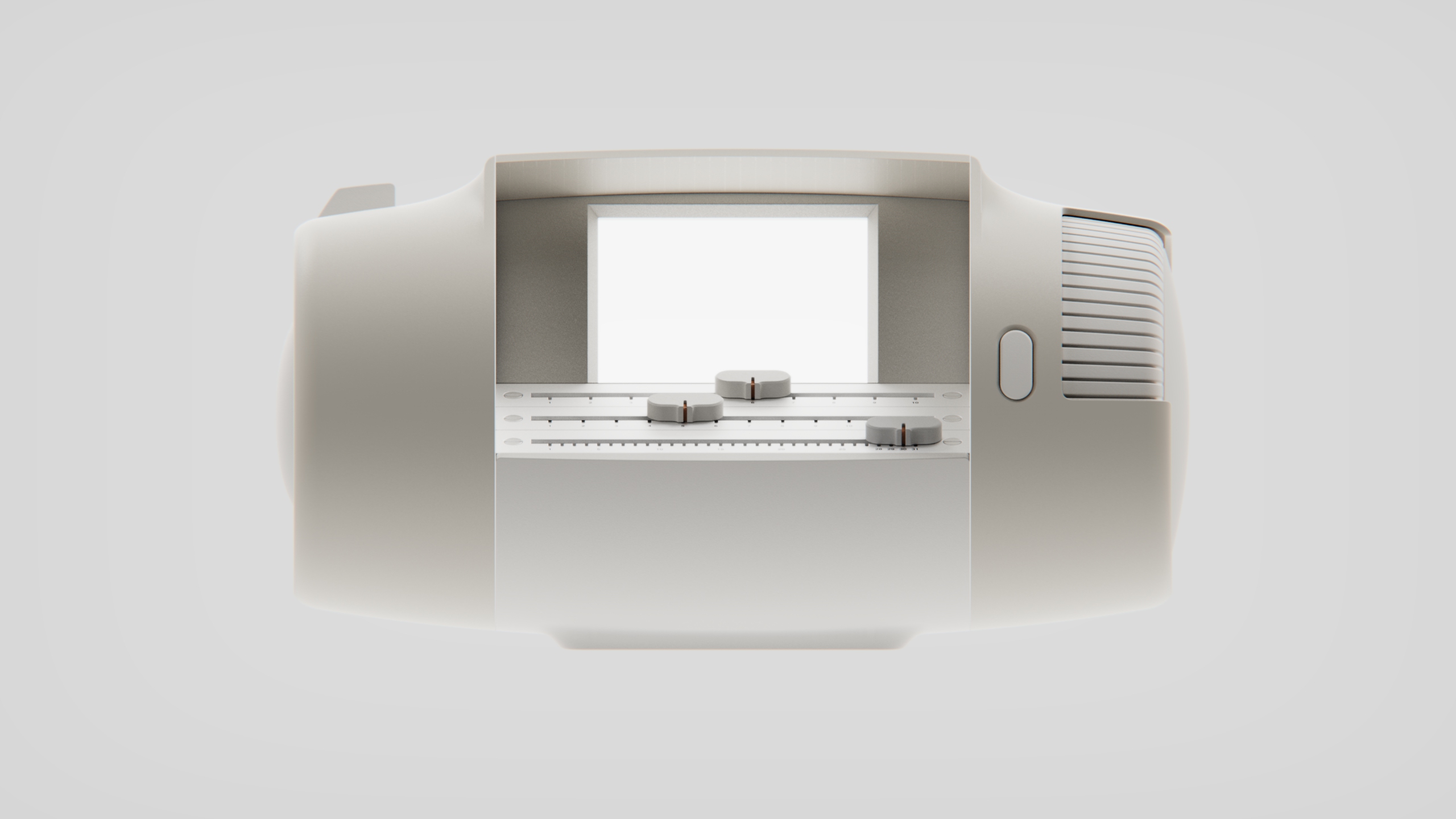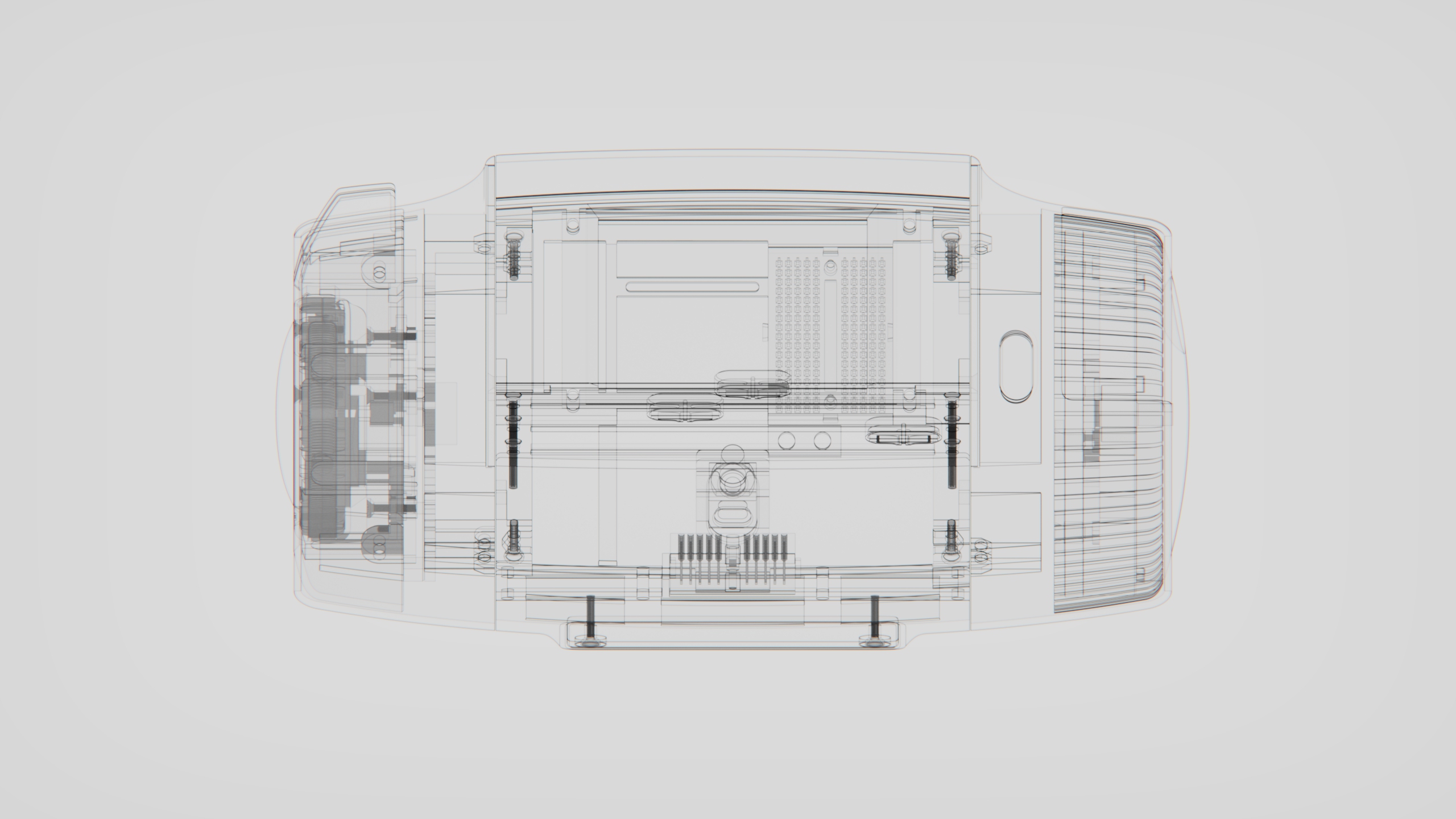Capstone: Iris
A journal celebrating the modern
self-portrait: selfies.
Selfies capture who we are, yet they’re often seen as performative. Iris reframes selfies as a practice for self-reflection.
| Duration: Spring 2025, 13 weeks |
| Tools: SolidWorks, Keyshot, Adobe Illustrator, Figma |
A dial for scrolling through images.
A rotary switch for filtering by time: day, month, or year.
Includes a selfie-specific camera on the left.
Designed for assembly + disassembly as a long-term object.
Context
1
2
3
Today’s fast-paced media often leaves little room for thought, leading to lost time, weaker memory development, and consequently, one’s sense of identity.
Additionally, modern forms of documentation tend to be geared toward sharing and social media, not the self.
What would a familiar medium, photography, look like as a tool for self-reflection?
Ideation
Tradition of Self PortraitsHistorically, self portraits have served as a tool for deep self-exploration and understanding. Today, we continue that tradition through selfies.
The Modern Selfie DualityAt first glance, the selfie is seen as vain. Yet, it has the potential to become a tool for identity formation and memory keeping. Selfies can place you in time: in context of the past, present, and projecting the future.
From there, we designed a system inspired by how memory works—encoding, storage, and retrieval. A camera that capture (encodes) selfies, while another device stores and lets you revisit them.
Encoding: Camera
PhilosophyEncouraging people to take authentic selfies - ones that don’t interrupt the moment and lowers the fear of judgement.
Object Criteria- Small, portable, and fast to interact
- Light, simple, calm, quiet
- Present, reflective
- Designed for a lifetime
At first we focused on portable, stick-like concepts to enable greater field of view.
Moved to a more compact form, taking inspiration from pocket mirrors.
Gradually, we pivoted to a circular design resembles a cookie. It feels warmer in the palm and naturally guides the way you hold it—encouraging you to point it toward yourself.
We also explored a magnetic cover that protects the lens and mirror due to the long-term nature of the design. Eventually scrapped for a faster, one-hand capture experience.
Adding a large shutter button, mirror, and establishing hierarchy on the face.
The Final Camera
Smaller form refinements such as a finger divot on the shutter button, a convex back, and chamfer surfacing were made to serve the idea of a quick but durable camera.
Storage + Retrieval: The Capsule
PhilosophyPromoting engagement in curating and archiving selfies, and providing opportunities to reflect on past selfies.
Object Criteria- Large and protective: time capsule
- Focused and exploratory interactions
- Designed for a lifetime
Inspired by Will Odom’s work, we found the capsule could be an opportunity to explore different pathways of accessing memory.
Fast and Exploratory: two dials that work together to enable user to scroll through photos in scale of year, months, and day.
Slow and Precise: enable one to directly jump to a specific time frame within the decade.
What does exploratory, playful browsing look or feel like?
Taking inspiration from Bladerunner, we settled on a 2-handed dial form to help encourage a fully engaging interaction (like an instrument).
Deciding between an industrial or streamlined silhouette while maintaining the idea of a protective vessel.
Establishing the interaction points and adjusting the form to accomodate the internals.Splitting the shell for assembly/disassembly.
Focusing on details such as the dial texture increment to match the calendar’s lines.
For CMF, we settled on injection-molded plastic with muted colors to support the idea of a life-time capsule.
Prototype Snapshots
Our focus was to create a prototype that has the tactility of the ideal product, so we honed in on the middle sliders, the feel of both dials, and the experience of assembly/disassembly.
I specifically focused on the dial mechanisms and exteriors in the process.
© 2021 - 2025 Aimee Li. Thanks for viewing!
